Turn qurbani cuts into gourmet steaks this Eid
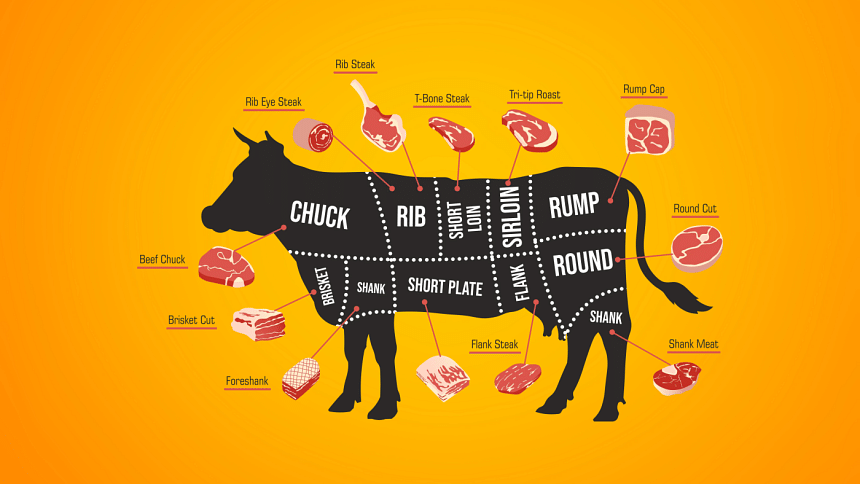
There's something primal yet poetic about Eid-ul-Azha. The smell of local spices being cooked to perfection with the beef or mutton, people running around to get the Eid duties fulfilled and that one cousin who turns into a self-declared meat expert for 48 hours straight.
While most households default to the usual suspects — rezala, korma, or a suspiciously overcooked shatkora beef — this year, why not channel your inner Gordon Ramsay and go full carnivore couture? Yes, we're talking steaks. Big, juicy, unapologetically bold steaks, straight from your Qurbani cow.
However, before we start, one needs to understand the fundamentals. A good steak is not about drowning the meat in masala or expensive herbs and spices. It's about respecting the cut, understanding the fat, and timing the doneness.
Here's your no-nonsense guide to preparing the perfect steak this Eid.
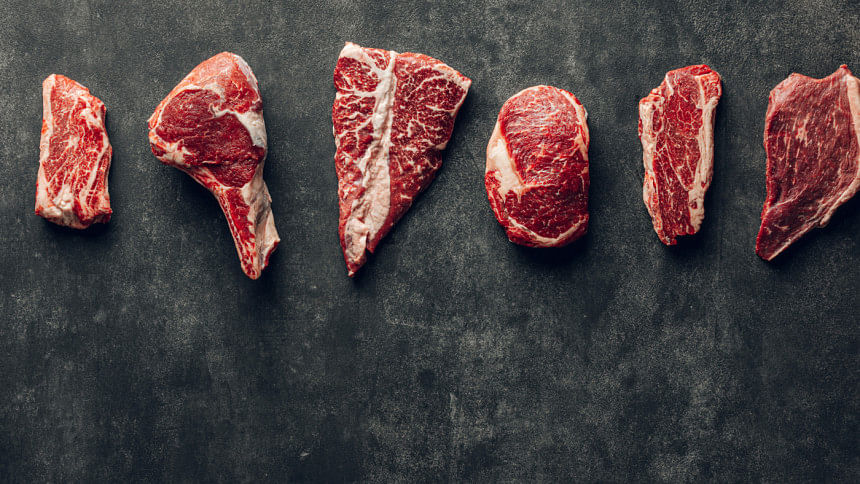
Start with the right cut (yes, it matters)
Not all meat is born equal. That giant chunk your uncle dropped on the table, shouting, "Any piece of meat can be turned into a steak!" Yeah, no. When prepping for steak, the muscle needs to be tender, with enough fat to flavour the bite. Look for —
Ribeye: Marbled to perfection, fatty, flavourful. Ideal if you like your steak juicy.
Sirloin: Leaner, slightly tougher, but still steak-worthy if cooked right.
Tenderloin (filet mignon): Super soft, but don't expect intense flavour. It's like the polite introvert of steaks.
T-bone or porterhouse: For when you are feeling dramatic. Bone-in, chunky, and Instagram-worthy.
In cattle anatomy, the best steak cuts come from the loin and rib areas; muscles that do not do much work. Less work equals less toughness, which means more tenderness. Your thighs may beg to differ, but cows are built differently.
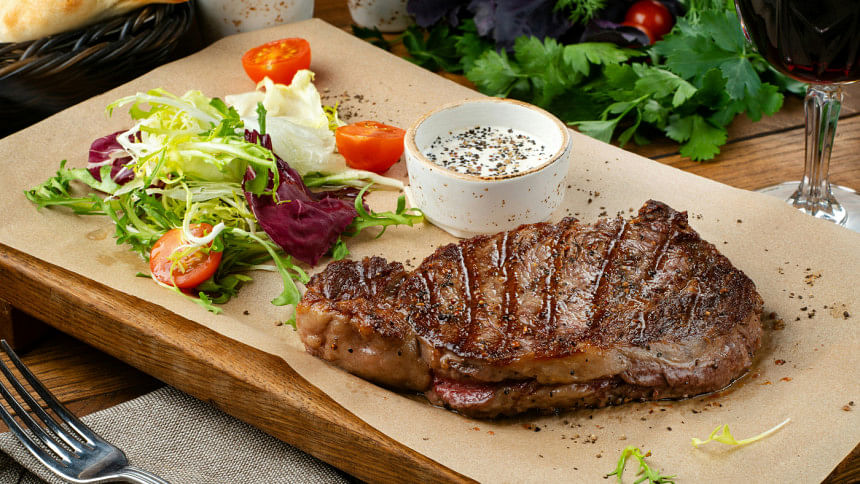
How to get these cuts post-Qurbani
Now, you won't hear your neighbourhood-butcher use words like "sirloin" or "porterhouse." That's your job. Right after the Qurbani, when the carcass is being broken down, quietly approach the butcher and point to the back portion, near the ribs and lower spine. These are your steak zones. Be specific. Ask them to keep the rib section intact, or slice portions around the backside near the ribs with a decent fat cap. And no, "raan er goshto" is not ideal, unless you are making bhuna or need a jaw workout.
Age before beauty (optional but glorious)
If you have got patience, let your beef rest in the fridge for 2–3 days. This natural ageing process breaks down enzymes, making the meat softer and richer in flavour. Wrap it loosely in parchment paper (not in an airtight container) and keep it dry. Dry-ageing intensifies umami flavour. In old-school terms: it makes your steak taste like something out of a Michelin-starred fantasy.
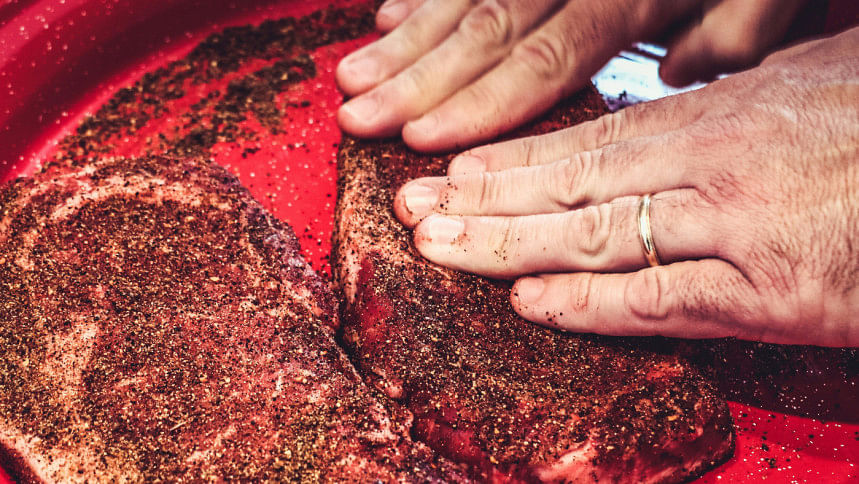
Season like you mean it
Salt and pepper. That's all you need. No tikka masala. No mustard paste. No kitchen sink. Just generous salt on both sides and let it sit for 30–45 minutes before cooking. It draws out moisture and then pulls it back in, seasoning the meat from within. Black pepper adds the heat.
For those feeling bougie, garlic butter, rosemary, and a splash of lemon juice after cooking can elevate it. But never let the garnish hijack the meat.
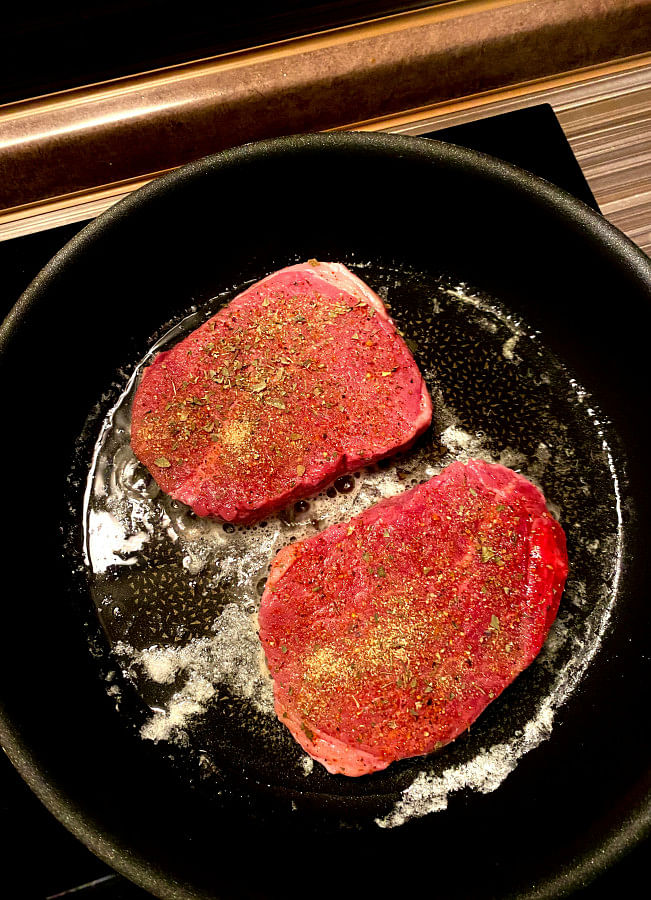
Mastering doneness (without a meat thermometer)
Let's be honest, no one in your house owns a meat thermometer! And that's okay. Use the "finger test" instead:
Rare: Soft like the base of your thumb when relaxed.
Medium: Slight resistance, like when you press your thumb and middle finger together.
Well-done: Firm, almost no bounce.
Cook steak on a cast iron pan or a grill pan over high heat. 2-3 minutes per side for medium-rare. Do not crowd the pan; give it breathing space.
Rest. always rest
The steak needs 5–10 minutes of rest after cooking. Let the juices redistribute instead of bleeding all over your plate like a crime scene. Slice against the grain: this shortens muscle fibres and makes the bite feel like butter.
One last thing...
You don't need a backyard smoker or some posh Himalayan salt block to make good steak. What you need is decent meat, a bit of technique, and the courage to tell your family that no, this is not bhuna, this is steak — and yes, it's supposed to be pink in the middle.
Happy Eid, and may your steak never be rubbery.

 For all latest news, follow The Daily Star's Google News channel.
For all latest news, follow The Daily Star's Google News channel. 








Comments